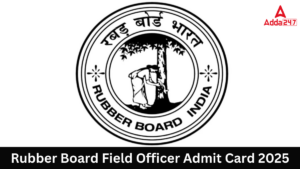Q1.Two or more computers connected to each other for sharing information form a ________.
(a) Router
(b) Server
(c) Network
(d) Tunnel
(e) Pipeline
Q2.NIC Stands for ________.
(a) Network Interface Card
(b) Network Internal Card
(c) Network Internet Client
(d) Network Input Card
(e) None of these
Q3.Walkie-talkie is an example of which of the following?
(a) Simplex communication
(b) Half-duplex communication
(c) Full-duplex communication
(d) Semi-duplex communication
(e) None of these
Q4. Which of the following is the most important/powerful computer in a typical network?
(a) Desktop
(b) Network client
(c) Network server
(d) Network station
(e) Network switch
Q5.What type of resource is most likely to be a shared common resource in a computer network?
(a)Keyboards
(b) Speakers
(c) Floppy disk drives
(d) Printers
(e) None of these
Q6.Each computer connected to the internet must______
(a) be an IBM PC
(b) be internet compatible
(c) have a unique IP address
(d) have a modem connection
(e) None of these
Q7.Which of the following is related to simplex communication?
(a) Single wire and two-sided communication
(b) Television
(c) Two-wire communication
(d) Walkie-talkie
(e)None of these
Q8.Which of the following communication modes provides bidirectional data transmission?
(a) Simplex
(b) Half Duplex
(c) Full Duplex
(d)Both (b) and (c)
(e)None of these
Q9.The abbreviation ISP stands for___
(a) International spy project
(b) Indian social planning
(c) Internet solution provider
(d) Internet service provider
(e) None of these
Q10.Which one of the following allows a user at one site to establish a connection to another site and then pass keystrokes from local host to remote host?
(a) HTTP
(b) FTP
(c) Telnet
(d) POP3
(e) None of these
Q11. Identify the odd term among the following groups.
(a) Optical fiber
(b) Co-axial cable
(c) Twisted pair wire
(d) Micro waves
(e) None of these
Q12.What is UTP in network terminology?
(a) Unshielded Twisted pair
(b) Ubiquitous Teflon port
(c) Uniformly Terminating port
(d) Unshielded-T-connector port
(e) None of these
Q13. Name the network that is geographically distributed in a small area. For example, it allows connection among computers of two separate departments in a building.
(a) LAN
(b) WAN
(c) TCP/IP
(d) OSI
(e) None of the above
Q14. The advantage of LAN is
(a) Sharing peripherals
(b) Backing up your data
(c) Saving all your data
(d) Accessing the web
(e) Automatic printing of data
Q15.Bridge work at which layer of OSI Model?
(a) Network layer
(b) Data link layer
(c) Physical layer
(d) Application layer
(e) Transport layer
Solutions
S1.Ans. (c)
Sol. A network is interconnection of two or more computers.
S2.Ans.(a)
Sol. A network interface card (NIC) is a circuit board or card that is installed in a computer so that it can be connected to a network. A network interface card provides the computer with a dedicated, full-time connection to a network.
S3.Ans.(b)
Sol. In the case of walkie-talkie, the person at one end sends signals, while the other on the receiving end receives these signals. The person at the receiving end cannot communicate until the person at the first end stops.
S4.Ans.(c)
Sol. A network server is a computer system, which is used as the central repository of data and various programs that are shared by users in a network.
S5.Ans.(d)
Sol. Printer is a shared common resource in a computer network.
S6.Ans.(c)
Sol. Each computer connected to the internet must have a unique IP address.
S7.Ans.(b)
Sol. Television is an example of simplex communication.
S8.Ans.(d)
Sol. Simplex is unidirectional while half duplex and full duplex communication modes are bidirectional. Difference between half duplex and full duplex is that the transmission of data is done one at a time in half duplex while simultaneous data transmission takes place in full duplex communication.
S9.Ans.(d)
Sol. An Internet service provider (ISP) is an organization that provides services accessing and using the Internet. Internet service providers may be organized in various forms, such as commercial, community-owned, non-profit, or otherwise privately owned.
S10.Ans. (c)
Sol. Through Telnet, an administrator or another user can establish a connection to someone else’s computer remotely. On the Web, HTTP and FTP protocols allow you to request specific files from remote computers, but not to actually be logged on as a user of that computer.
S11.Ans.(d)
Sol. optical fiber, co-axial cable and twisted pair wire are example of guided medium. Micro waves are unguided medium.
S12.Ans.(a)
Sol. Short for unshielded twisted pair, a popular type of cable that consists of two unshielded wires twisted around each other. Due to its low cost, UTP cabling is used extensively for local-area networks (LANs) and telephone connections.
S13.Ans.(a)
Sol. LAN is a privately owned network of an organisation. It is used to connect a computer with additional hardware, such as a printer, at home or in office. The range of LAN is restricted to a few kilometers only. It is more reliable and better speed for small area.
S14. Ans.(a)
S15. Ans.(b)
Sol. Bridges operate at the Data-Link Layer of the OSI Model. They can distinguish between local and remote data, so data traveling from one workstation to another in the same segment doesn’t have to cross the bridge. Bridges operate on MAC-Layer addresses.
Click Here to Register for Bank Exams 2021 Preparation Material




 GA Capsule for SBI Clerk Mains 2025, Dow...
GA Capsule for SBI Clerk Mains 2025, Dow...
 The Hindu Review October 2022: Download ...
The Hindu Review October 2022: Download ...
 Rubber Board Field Officer Admit Card 20...
Rubber Board Field Officer Admit Card 20...







